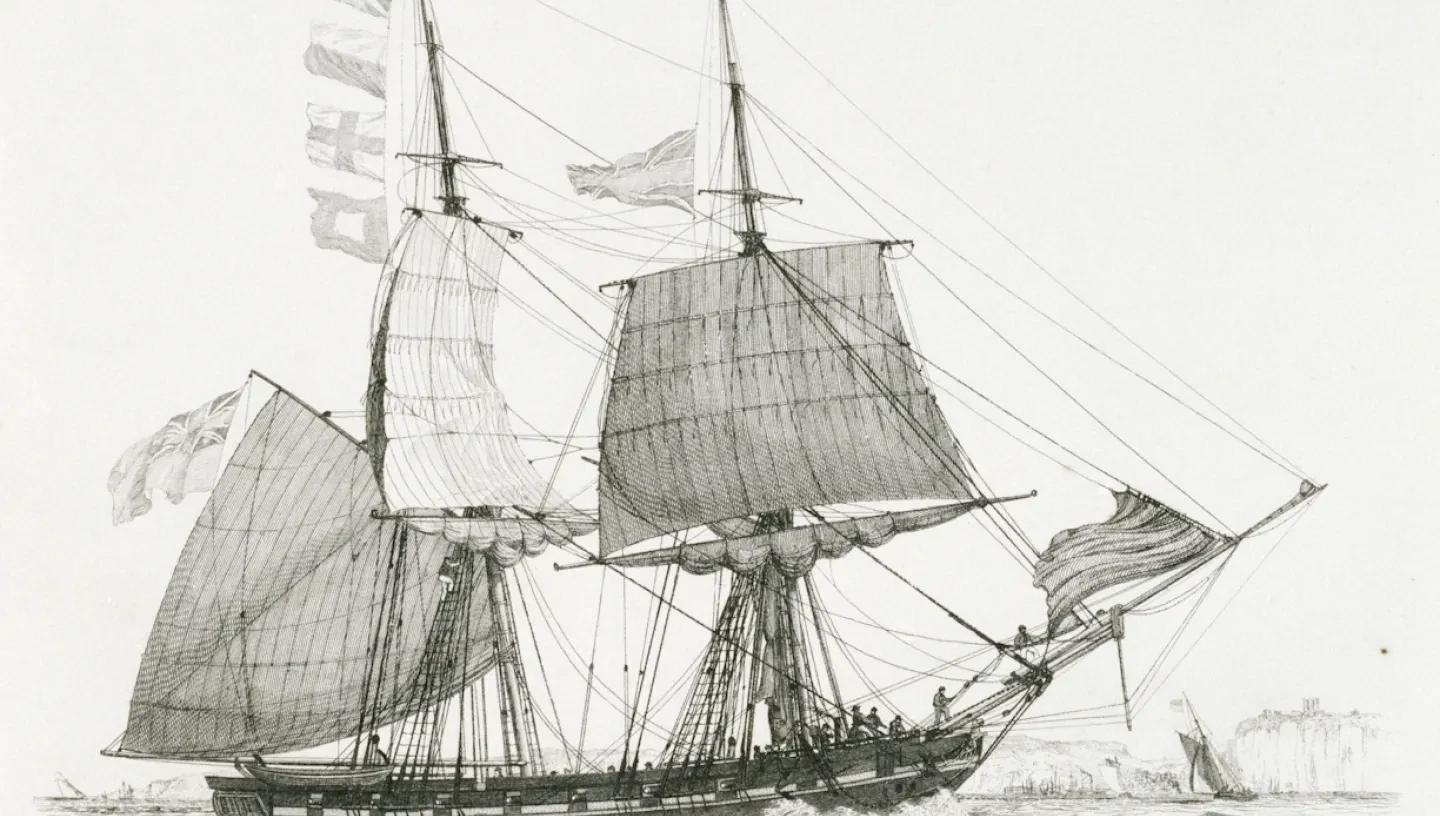
Rated Navy ships in the 17th to 19th centuries
The rating system of the British Royal Navy was used to categorise warships between the 17th and 19th centuries. There were six rates of warship.
A ship’s rate was basically decided by the number of guns she carried, from the largest 120-gun First Rate, down to the Sixth Rate 20-gun ships. Captains commanded rated ships, which were always ship rigged – meaning they had three square-rigged masts.
First Rate
First Rate ships were the biggest of the fleet with their gun batteries carried on three decks. They were generally used as flagships and fought in the centre of the line-of-battle. They were armed with a minimum of 100 heavy cannon, carried a crew of about 850 and were over 2000 tons Builder’s Measure (a formula for calculating the capacity of the ship, not the displacement of the ship as is the practice today).
Second Rate
The Second Rate ships of the line were also three-deckers, but smaller and cheaper. They mounted between 90 and 98 guns, and like the First Rates fought in the centre of the line-of-battle. Generally around the 2000 ton mark, they had a crew of about 750. Unlike the First Rates, which were too valuable to risk in distant stations, the Second Rates often served overseas as flagships. They had a reputation for poor handling and slow sailing.
Third Rate
The most numerous line-of-battle ships were the two-decker Third Rates with 64–80 guns. The most effective and numerous of these was the 74-gun ship, in many ways the ideal compromise of economy, fighting power and sailing performance, which formed the core of the battle fleet. They carried a crew of about 650 men.
Fourth Rate
Two decker ships of 50–60 guns were no longer ‘fit to stand in the line of battle’ by the end of the 18th century. With two decks, their extra accommodation made them suitable flagships for minor overseas stations, while their relatively shallow draught made them useful as headquarter ships for anti-invasion operations in the North Sea and the English Channel. They were also useful as convoy escorts, troopships and even on occasion, as convict transports. In normal service they had a crew of 350 and measured around 1000 tons.
Fifth Rate
These were the frigates, the Navy’s ‘glamour ships’. With their main armament on a single gundeck, they were the fast scouts of the battle fleet, when not operating in an independent cruising role, searching out enemy merchant ships, privateers or enemy fleets. Developed from early-18th century prototypes, the Fifth Rates of Admiral Lord Nelson’s time had a variety of armaments and gun arrangements, from 32–40 guns. Captured enemy frigates were also used in service, and many of the best British-built ships were copied or adapted from French designs. Their tonnage ranged from 700 to 1450 tons, with crews of about 300 men.
Sixth Rate
The Sixth Rates were smaller and more lightly armed frigates, with between 22 and 28 guns, a crew of about 150, and measured 450 to 550 tons.
Find out about ‘unrated’ Royal Navy vessels in the 17th to 19th centuries